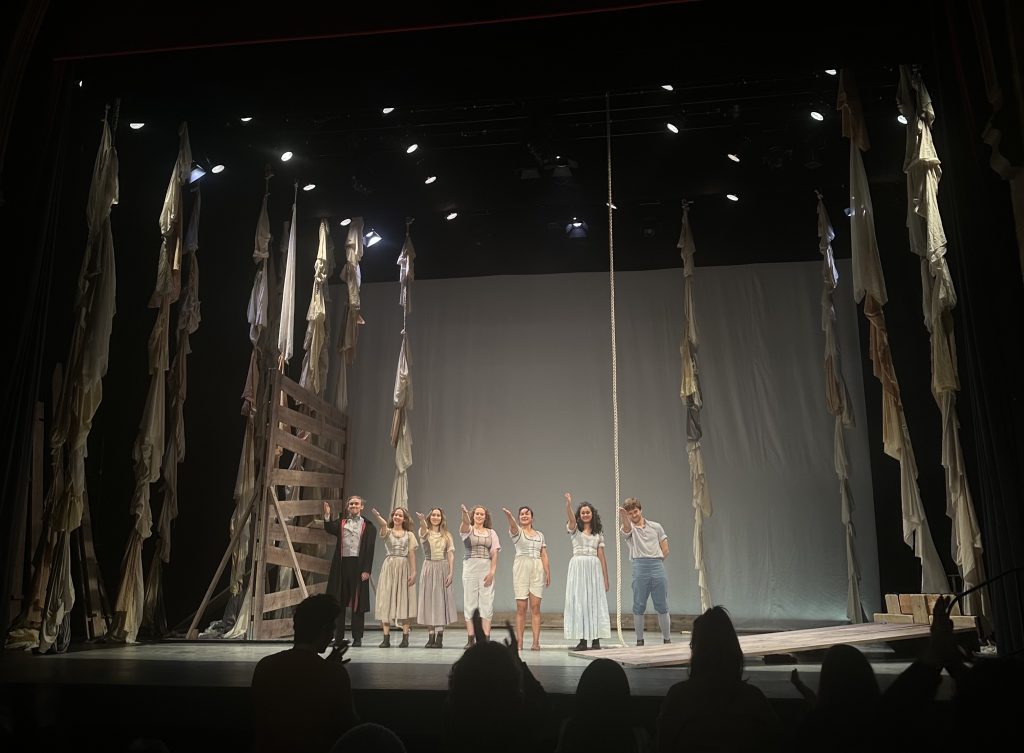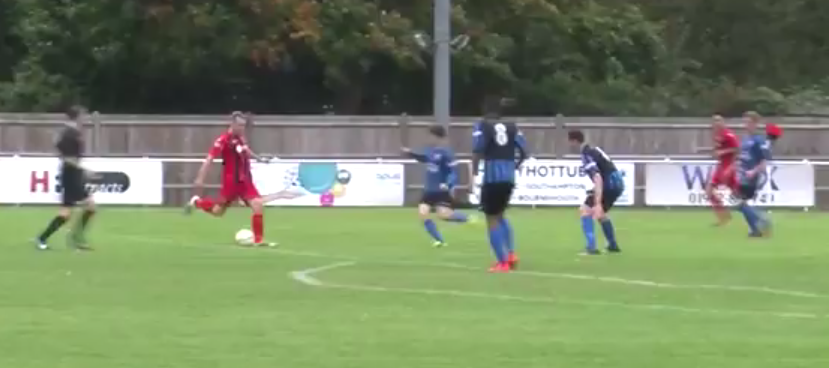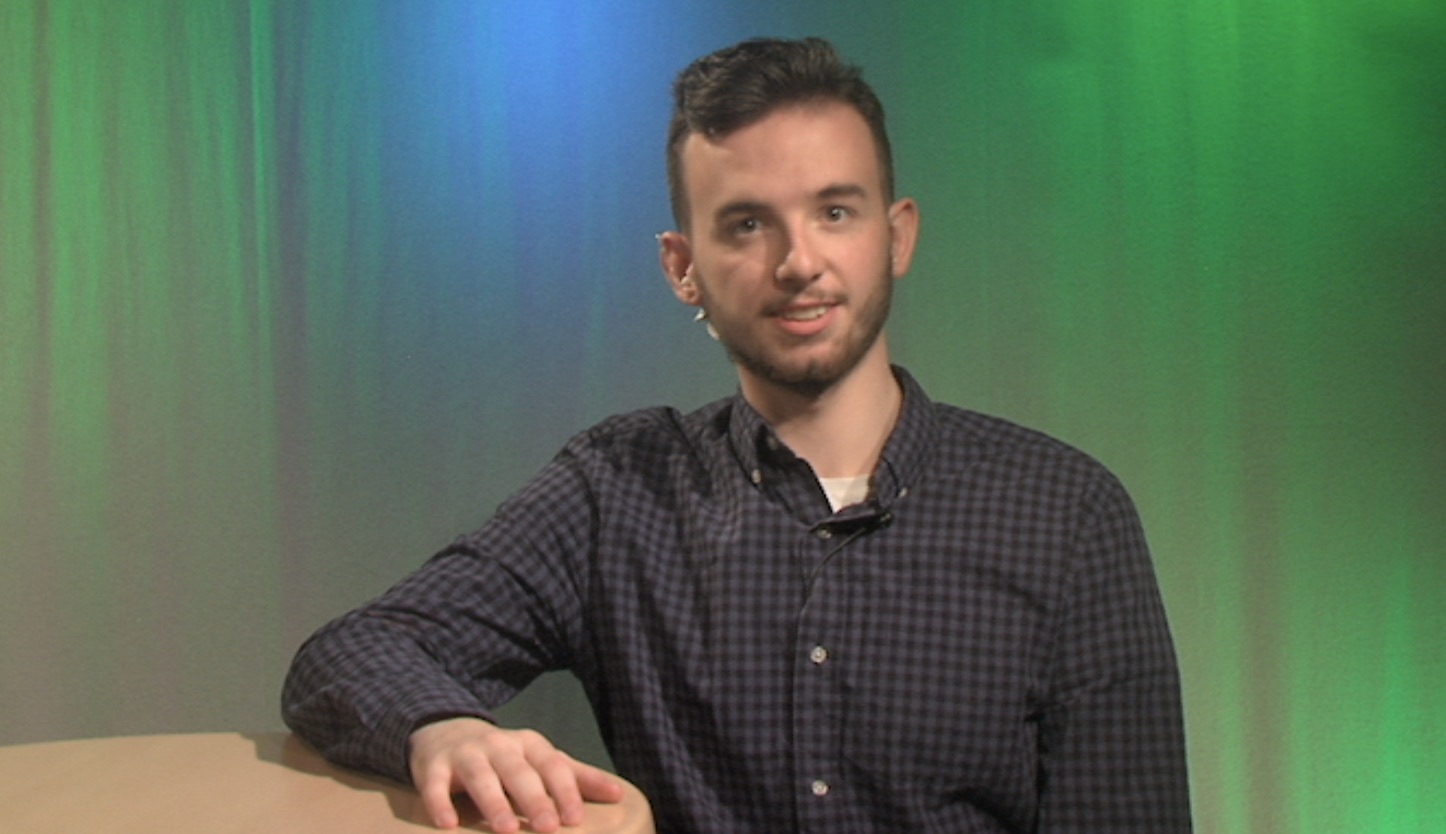Culture
REVIEW: Tess by Ockham’s Razor at New Theatre Royal Portsmouth

What would you say is the best way to do a book to theatre adaptation? Well I think ‘Tess’ by Ockham’s Razor could be the answer to that question. On offer at New Theatre Royal Portsmouth at the moment is ‘Tess’ by Ockham’s Razor, and all I can really say is wow! This is an adaptation of Thomas Hardy’s classic novel, ‘Tess of the D’Urbervilles’. It’s a story that has already been adapted to the screen, and to be honest I wasn’t quite sure how it would transfer to the stage. I could vision it being performed as a standard play, but could I vision it as a mixture of contemporary circus and theatre? My answer should have absolutely been yes! Alex Harvey and Charlotte Mooney have adapted and directed this masterpiece to perfection. Along with producer Alison King, a fantasy vision was seen – and they have managed to bring that vision to life.
This show showcases the storytelling ability of dance, circus, and movement; as well as the athleticism and range of talent its performers have. The story is one that still has major relevance in today’s society with its incredibly nuanced evocation of female relationships, sexual desires, consent, privilege, and poverty. In this particular adaptation, it is all told as a flashback through Tess herself as a narrator. She is the only character with dialogue, the rest of the cast (including ‘Memory Tess’) tell their part of the story through the incredibly energetic and powerful nature of circus and body movement. I just love this! It’s such a creative way of showing the power, loss and and endurance of the story – as we see how the performers bodies react with the extreme strength and physicality of circus. It seems like subliminal messaging at its finest almost.
Just stunning.
There are only seven in the cast but they have to be seven of the most talented performers I have seen. All of them are so strong and powerful, you get hooked on their every movement and emotion. These aren’t just performers, they’re athletes. I can guarantee that you will feel a wide range of emotions whilst watching this show. There were many times I was audibly laughing, and there were times when you could hear a pin drop in the auditorium. Just stunning. Heading the cast was Hanora Kamen as ‘Tess Durbeyfield’, and her narration was spot on. She wasn’t only telling the story, but recalling speech in different accents as the cast was performing the relevant flashback. In fact there were many times when the cast would be performing something different to what Kamen would be narrating, and you would be consuming two different things at once – but it didn’t feel difficult.
Kamen’s partner in crime was Lila Naruse as ‘Tess Durbeyfield’ but the ‘memory’ version. These two were so good together that you would actually forget that you were watching/listening to two different people. The trio of girls was Lauren Jamieson, Victoria Skillen, and Shannon Kate Platt. The connection that these three share is phenomenal, and their comedic moments were fantastic. ‘Alec D’Urberville’ was played by Joshua Fraser who’s ring routine won’t leave my mind anytime soon; and ‘Angel Clare’ was played by Nat Wittingham who’s performance was beautifully powerful. The strength, commitment, and attention to detail of this cast is fantastic and certainly doesn’t go unnoticed. The standing ovation tonight only proved that – Bravo!

The set was actually incredibly intricate, whilst also being very stripped back. It was basically just lots of wood, rope, and materials – that when placed together with the dynamic movements from the cast, created a piece of innovative theatre. The cast actually end up building all of the set and there is always so much going on, that it feels like incredibly organised chaos. One thing that sticks in my mind as extremely effective was the way in which they portrayed Tess’ horse, and the way they would walk on the two planks whilst staying in place. It was new, it was fresh, and I loved it! The lighting and projection was also simple but added the perfect amount of ambience or warmth/cold when it needed to. Visually gorgeous.
I still can’t get over how beautiful and impressive the whole thing was.
The music was matched perfectly to the show, but sometimes was very repetitive in all honesty. It was only a soundtrack that was being played, but as a friend rightly said, if it was a live band it probably would’ve taken away from the show because of how much was going on. In fact there were times where the music was too loud which just overloaded the senses. I think what really makes this show is all of the above mixed with the brilliant choreography. Choreographer, Nathan Johnston, cannot be credited enough as without his work, I don’t think the show works. One piece of movement that gets revisited multiple times, forwards and in reverse (if you know you know), is the sequence of ‘Tess’ and ‘Angel’ when they make their way along the trail to the farm. The movement of the set and cast had to be inch perfect, both in timing and spacing, and that’s exactly what it was. Literally mesmerising!
Overall, ‘Tess’ is an incredibly impressive spectacle. It’s something new and exciting, and I’m interested to see what Ockham’s Razor will produce next. The story was easily followable, and the way in which it’s told is beautifully powerful and physical. Mixing contemporary circus into theatre adaptations should now be a benchmark to hit I think. I still can’t get over how beautiful and impressive the whole thing was. Whatever part of theatre you’re into, I think this is a show that you should definitely see if you’re lucky enough to get the chance. The cast are superb and the production as a whole will be unlike anything you’ve quite seen. ‘Tess’ is touring until June this year before further dates for spring 2025 are announced. I wish everybody involved the best of luck going forward, I know I’m already looking at when I can come and see this again.
Culture
Where confidence takes centre stage: How theatre transforms

Performing arts education isn’t just about learning to act, dance, or sing – it’s vital in developing many young people’s confidence and self-expression.
In a digital age where young people are spending more time on their devices than ever before, theatre education provides lifelong skills like communication, resilience and teamwork.
I caught up with some of the students at Artisan Theatre School, a Hampshire based youth theatre club, to see if this rings true.
Ben, 18, said his time at theatre school has “helped develop people skills” and made him “a more confident person”.
He urged other young people to “get involved and enjoy it!”
Daniel, 17, shared a similar sentiment saying his “confidence has grown a lot”.
Theatre education can open a whole world of new opportunities for young people, giving them the space to discover their talents and explore future career paths.
Lucy, 17, has attended Artisan Theatre School for nine years and said: “I want to be a performer in some capacity.”
She added: “That’s my dream because of Artisan.”
Emma, a singing teacher at the school, said performing arts education is “beneficial to anyone,” not just those pursuing it professionally.
She added it can be especially valuable for children with SEN, helping them build confidence, improve communication, and “come out of their shell” in a supportive environment.
Unfortunately, despite its benefits, arts education is not guaranteed for every young person.
Cuts to funding over the last decade has had a significant impact, limiting access to creative learning opportunities.
The Cultural Learning Alliance’s 2025 report reveals a 42% decrease in Creative Arts based GCSE entries since 2010, and a 27% decline in the number of Arts teachers.
Sam Blackwell, principal and founder of Artisan Theatre School, said arts education is “really important” and that “they don’t do enough of it in schools”.
She explained that her vision in creating the school was to “give back more to kids and get them being confident”.
To help fill the gaps left by reduced arts provision in schools, Sam plans to introduce additional classes and offer increased opportunities for her students to learn from industry professionals.
Culture
And we all keep dancing for it can’t get any worse (90s/00s)

The Shakespearean nature of Tony Blair’s time as Prime Minister is something that had never been seen and his obsession with “the spin” that had won him the 1997 election and made him one of the most popular prime ministers when entering office.
With large proportions of the public optimistic for his premiership incoming.
A fall from grace would ensue much like Macbeth.
It would be cruel and untrue to reflect on Tony Blair’s premiership to say that it was a complete failure, especially as many still see him as one of the best PMs the UK has ever had.
Since one of the biggest landslides in UK election history in 1997, he was able to push through many socialist policies without much of a hassle: inflation was low, crime was down by a third, children were achieving some of their highest results ever in school, thousands more students were going to university, a million pensioners and three million children had been taken out of poverty, the quality of the air, beaches, and drinking water was as clean as before the industrial revolution.
However 9/11 changed everything. The era of youthful optimism and rebellion has been replaced by what a lot of thinkers call post-post modernism.
At site Zero, George Bush claimed that “those who are responsible must be brought to justice.”
He outlined Cuba, Iran, Libya, Syria, North Korea and most importantly Iraq.
Once the troops stepped into Iraq, it was the start of a domino effect that quickly decimated Blair’s time as PM.
Unlike Kosovo and Sierra Leone, Britain’s involvement in Iraq did not have the public’s support.
In his book The Prime Ministers, Steve Richards remarks that Tony Blair had not assumed any cabinet position in the lead up to his premiership and asks:”What if Blair had been foreign secretary? at least he would’ve seen, and interpreted intelligence – an explosively contentious issue in the run-up to the Iraq War.”
And then, the day after London had been announced as the host of the 2012 Olympics, on the 6th of July 2005, 7/7 happened.
Four terrorists detonated bombs on public transport – 52 killed and 784 were injured.
When times get tougher and life gets sadder, what do people do? Dance to forget
Prince William and Kate were leaving a Chelsea nightclub at 3am, Prince Harry was partying with Kanye West and getting into a scuffle with photographers at 4am.
The 2000s club scene was here and everyone was taking part; it was loud, it was abrasive, and it was here to stay.
Since the introduction of the stifling 1994 Criminal Justice Act, which is considered to have brought the illegal rave era largely to a close, “free parties” were the new get-around of the law: Student clubs offering “buy one, get three free” on alcopops and 50p doubles for an hour.
Halls bars were £1.20 a pint. Artists like LCD Soundsystem, Missy Elliot and Rihanna began their rise to fame with dirty, booming soundscapes that captured the drug-fuelled atmosphere of clubs as everyone dances to a beat that never seems to end, drenched in sweat.
Films like Trainspotting capture the allure of 2000s clubbing but the grim reality, drugs have found their way into the club scene.
Much like the Oasis album Standing on the Shoulder of Giants is described as Oasis’ “come down album”, the 2000s was a comedown era of clubbing.
The times were sad, but the music got louder?
As David Cameron’s government entered Number 10 Downing Street in 2010 and ushered in 14 years of austerity, where exactly would clubbing culture go with almost all clubs closing….
Culture
REVIEW: Sigrid – There’s Always More That I Could Say

2 out of 5 stars
A disappointing third album filled with negativity
In all honesty, I was late to Sigrid’s party.
I started following the Norwegian pop star in 2023 when she had already released two albums and completed a slew of EPs and international tours.
In no time at all, I was captivated by her rasping tones, funky rhythms, and cool electronic synths.
When news broke that her third album would be releasing on 24 October, it was no surprise to find myself listening and assessing it…
Jellyfish is the first single and the most lighthearted. I like it.
It’s a nice story about two people meeting at a dance and kindling a relationship.
Sigrid sings in a syncopated rhythm, giving a jazzy tone to the tune.
For the first time in her career, she includes a flute.
Cold, gritty, grim
It plays a flourish at the beginning but I can’t hear it throughout the rest of the track. It would be good to hear more of the flute in future.
Fort Knox is single number two. As the name suggests, this is a cold, gritty, grim song about a woman betrayed by her man.
This betrayal cuts so deep that she has retreated into her shell to “lock my love up in… Fort Knox”.
I enjoyed the dramatic, dark nature here, especially the war cry chorus throughout the song.
Towards the end, you would think the song has finished before it plays one more crescendo of strings to cap things off. I thought that was unnecessary.
The third single, Two Years, is written from the perspective of the woman’s boyfriend, another new departure for Sigrid.
He has been chasing for that exact period of time. It’s a cheery song with a strong beat, despite the desperate lyrics like: “What are you running from? / Why did you let me go?”
I’ll Always Be Your Girl is another sad song of frustration and heartache caused by a rowdy, hot-headed partner.
It is sung very well, especially the pleading chorus line, and the drum-guitar combination gives me something to nod along to.
Unconventional energy
Do It Again is the most unremarkable song on the album.
There is a good guitar and drum track, however the story again is quite predictable for Sigrid (being tempted to rekindle on old flame relationship).
Kiss The Sky returns to more unconventional energy which is great.
A lovely fade into the track leads into the main verses.
This time, Sigrid is speaking her verses with a distorted effect rather than singing them. It sounds good and complements her natural raspiness.
A strong guitar riff carries us through the bridge. The electronic synths make this seem like a 1980s dance track.
It’s only the lyrics that make this song a story of disappointment between lovers.
There is sexual innuendo in Hush, Baby, Hurry Slowly.
You could interpret it as a man and woman deciding whether to move forward with their relationship.
You could see it as partners deciding whether to have sex or not.
As a result, it’s an interesting song and makes you listen to try and work it out.
The structure shakes things up by starting with the chorus fading in.
The song ends with the melody slowing down and lowering in pitch, reflecting the title in musical terms.
The title track is the obligatory solo piano song.
Sigrid has had at least one piano focused song in all albums.
This is the most beautiful song in the album, featuring solo piano and a nice resonance on the voice.
The lyrics still contain tensions between people, like “giving…my worst” as a girlfriend.
Nevertheless, this is my favourite song from this year’s collection.
The penultimate track is also the longest in the album.
Have You Heard This Song Before picks up the energy from the previous song with a predictable but welcome mix of drums and synths.
The lyrics are pretty hopeful in tone about wanting to spend time with your partner. This is the most positive track on the album.
The last song, Eternal Sunshine, is a conventional finale song.
It has a regular beat and instrumentation.
It is another song built out of frustration with a partner – she wants to “drink” him out of her mind.
It would have been nice to have something different to end on – maybe a different topic.
This is the shortest album Sigrid has released. That is disappointing.
There are 10 songs in only 31 minutes.
I would have expected the usual 12 tracks or more.
The previous albums managed it fine.
Sucker Punch (2019) and How To Let Go (2022) contained 12 songs. The Special Edition of How To Let Go added 15 songs on top of the originals.
This album differs from the last two in that every song but one is constantly loud, energetic, and pumping.
I would have preferred more balance between softer and pounding songs.
How To Let Go had more positivity in it, such as singing in a taxi, body-confidence in the mirror and making the most of life.
This album has replaced that with disappointment and frustration.
It is the album with the most “explicit” songs – never before have we had an album with so much swearing.
I hope that is toned down in future.
Here’s hoping that the next album is more positive, unconventional and creative.
Perhaps that will come out in three years, like the others.
There’s always more that Sigrid could say (sorry, that was a terrible joke).
-

 Football9 years ago
Football9 years agoFootball – Winchester City vs Didcot Town
-

 Community9 years ago
Community9 years agoWinnall community association renovated
-
Community8 years ago
Hampshire’s frontline services at risk
-

 Hampshire8 years ago
Hampshire8 years agoUniversity of Winchester Parking Trouble
-
Community8 years ago
Knight Bus unveiled at school
-

 Community8 years ago
Community8 years ago‘Controversial’ new plans take shape in Eastleigh
-

 Winchester News Online8 years ago
Winchester News Online8 years ago#MiracleMissy Update
-

 Bulletins7 years ago
Bulletins7 years agoWINOL 20 November 2018
